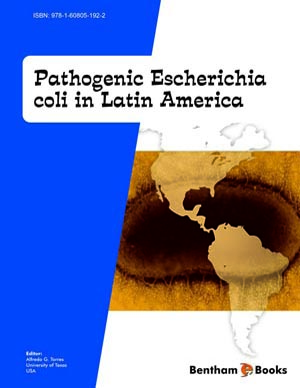Abstract
Enteropathogenic Escherichia coli (EPEC) comprise two groups of distinct organisms classified as typical EPEC (tEPEC) and atypical EPEC (aEPEC). tEPEC were leading infantile diarrheal agents in developing countries, whereas aEPEC prevailed in developed countries. Nowadays, tEPEC are less frequent while aEPEC are emerging enteropathogens of children and adults (including HIV-infected patients) in developing countries. EPEC infections can lead to severe secretory acute and persistent diarrheal diseases. Both EPEC groups contain the locus of enterocyte effacement (LEE), which encodes a Type Three Secretion System and various effector proteins that alter several signaling mechanisms of intestinal cells, leading to the development of attaching and effacing (A/E) lesions. The distinction between tEPEC and aEPEC strains is based on the expression of the bundle-forming pilus (BFP) adhesive-structure, which is restricted to tEPEC. Both EPEC groups lack the Shiga toxin genes of another A/E lesion-producing pathogen, enterohemorrhagic E. coli. aEPEC are much more heterogeneous than tEPEC in terms of phenotypic characteristics and virulence determinants. Humans are the only reservoir of tEPEC, whereas aEPEC strains may be found in humans and diverse animal species. Diagnosis is currently performed in research laboratories that use molecular methods to detect specific virulence properties that distinguish tEPEC from aEPEC strains. Antibiotics are indicated to treat more severe or persistent diarrheal cases, but resistance has been detected worldwide. Prophylactic measures are common to other diarrheal infections and vaccines based on surface or secreted proteins that were shown to induce antibodies (IgG and SIgA) responses in endemic areas are under development.


